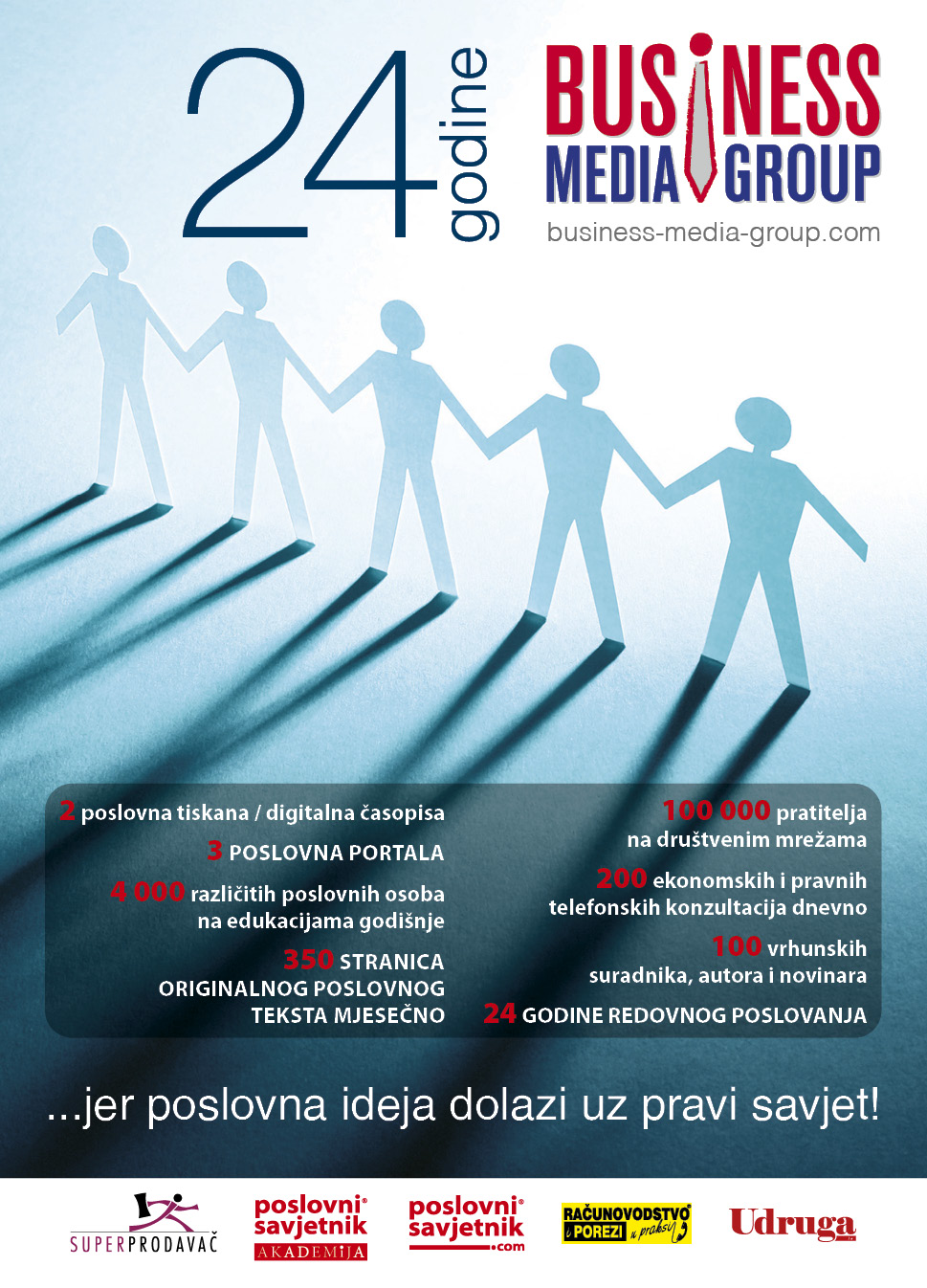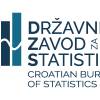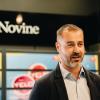John Lodder: A new Paradigm but CEO’s and managers are still struggling with it

The role of CEO’s and managers has fundamentally changed over time, and so has the nature of dilemmas they are facing. In 19th century thinking, a person was seen as either muscle or energy and management decided what their re-active employees should do.
This paradigm changed in the 20th century, an employee became a subordinate with a hierarchy of needs and a need for hierarchy. The paradigm in the present century is to consider an employee as an autonomous and reflective individual who has a full set of needs, internal and external to the organization; the management co-creates a customized workplace and power is diffused and shared.
In contrast with traditional management, where structures and systems are derived from a pre-defined strategy, the design of the customized workplace seeks to balance what matters for the company (its strategy) and what matters for the individuals (their life strategies).”
In fact, management and employees inter-actively decide and execute. In this world, conflict is a normal part of life and reconciling dilemmas is the source of most authority. This new paradigm is even more amplified by the continuous process of globalization. (From ‘A new paradigm for HRM’ by Prof. Fons Trompenaars)
In my November column I describe 4 global trends that are influencing about every organization. I see many CEO’s, managers and HRM functions struggling with an adequate response. I give several ideas and tips for solutions for you, your company status and culture to think about in coping with this paradigm or dilemma. I finish with a recent Gallup study with the top six priorities employees want in their next job. I hope that CEO’s, managers, leaders and HRM people will get inspired.
Russ Ackoff distinguishes Problem-Solving approaches as: ‘’in-active, re-active, pro-active and inter-active’’. However, most politicians react similar as most managers: emotional, defensive and denying.
Psychologically mindsets are sharpened in a negative direction that prevents clear thinking, looking ahead and being innovative. Where is your purpose? Your idealism? Your imagination? Your creative plan?
Where is the necessary Reinvention that prevents your company to sink like the Titanic?
Trends we see globally in many corporations and businesses: more and more managers don't really know what they did, what they are doing or what they should do in our turbulent and volatile world.
Primary feelings, emotions and instincts prevail over logic, reasoning and strategic thinking.
Managers fall back on theories and practices that were created for the long lifecycles of organizations till the 1960’s and 70’s but that are obsolete now as the average lifecycle is reduced to 3,5 years.
Instead of rethinking their portfolio, reinvent their business plan, CEO's fall in the same old trap of cutting costs and firing people as the only solution they can think of.
-They are firefighting with 'Short term fixes and long term pains'.
-Or they are blinded by idealism: 'Wishing for a better tomorrow while destroying today.'
-Or they are suffering from the Titanic Syndrome: 'Arrogance and trust in their past successes, not capable to anticipate and adept to change and disruption.’
Four important global trends to watch
1.Mass layoffs in the IT-sector, other sectors to follow?
2.The global population is aging, is your organization prepared?
3.Generations from Baby Boomers till Generation Z differ from each other.
4.Baby Boomers till Generation Z are disconnected from their organizations.
Trend 1- Mass layoffs in the IT-sector
Mass layoffs in Big Tech are a consequence of over-optimistic managers. Could this damage have been prevented? Which pitfalls should be avoided in decision-making?
Twitter, Alphabet (Google), Snap, Microsoft: just a small pick of the many American technology companies that since this summer sent an e-mail to their employees writing them ‘’you are fired’’, the American way to fire people. I hope it’s not yours.
Meta (Facebook, WhatsApp) was two weeks ago the last in the line of big names to cause a bloodbath in their company and Amazon is going to lay off 10,000 people according The New Tork Times.
In figure 1 you can see what happened in 2022, the golden age for Silicon Valley seems to be over.
Logic, this party can't go on forever" said Professor Margaret O’Mara (University of Washington).
In many ways, we're just going back to normal after a huge ramp-up where everything went super-sized" she said, as she calls the mass layoffs a correction to unbridled growth that was not sustainable in the long term. ‘‘This is simply how one of the certainties in the economy works, after strong growth always follows a correction’’.
The leaders of the big tech companies should have known that there would come a time when things would go less well. However, it’s not easy to hit the brakes in time. A few years ago, during the ‘Credit Crunch’, exactly the same thing happened. Even then company directors kept going until the party ended abruptly.
The fact that the top executives nevertheless continued to invest fully in people and capital despite the threat is very human, according to scientific research: we tend to consider negative events less likely than positive events. In other words: in our optimism we are blind to accidents. That is why it is so difficult to take a loss as soon as the prices of our share package fall. Waiting for things to get better is easier, feels better.
While the pain can get bigger and even become unbearable.
Mark Zuckerberg (the founder of Meta) and Jack Dorsey (the founder of Twitter) admit to have been too optimistic and to have thought for too long that this celebration of growth would continue. Feeling safe, they invested in the company and hired thousands of people.
I grew the size of the company too quickly. Sorry about that," Dorsey writes in a tweet about the layoff that his successor Elon Musk is implementing because of the disappointing results.
That was a miscalculation," Zuckerberg says in a message to employees, in which he says he will lay off 13 percent of his staff. “At the beginning of Covid, the world went online very quickly and the rise of e-commerce led to excessive sales growth. Many people predicted this would be a permanent acceleration even after the pandemic was over. So did I so I made the decision to significantly increase our investments.”
Figure 1: Layoffs in Big Tech 2022
In August 2022 Snap laid off 20% of its workforce. In November followed the massive layoffs at Twitter (3,700 employees) and Meta (11,000). Then Amazon said to layoff around 10,000 of its workforce. The list is not full by any account, but this graph in figure 1 gives us some perspective.
So what do you think? Is the IT industry experiencing a regular turbulence caused by the world’s volatility or is it a sign that it’s high time to think about Reinventing the whole sector?
The pitfalls of decision makers
‘Bad decisions often arise because the right information was not available or was not sought’ write John Hammond, Ralph Keeney and Howard Raiffa in a HarvardBusinessReview article entitled ‘The hidden traps in decision making’. (https://hbr.org/1998/09/the-hidden-traps-in-decision-making-2)
The error also arises because the decision-maker deceives himself! Too much weight is unconsciously given to information that supports our own expectations. Just like Meta CEO Zuckerberg was guided by the opinions of others. They matched his expectations perfectly.
We also like to leave things as they are, even if there are better alternatives. This is called the status quo trap.
Another pitfall is when decision-makers specifically look for information that supports their own expectations. After that, it feels even better to stand behind a decision. We have too much confidence in our decision when we create too high expectations for ourselves and our environment.
These pitfalls occur at all levels and indicate that leaders are also people with emotions and let them be guided by them
How to prevent pitfalls?
Question is how a leader prevents such blindness in his/her decision-making, because the damage is large and affects big parts of society.
Awareness is the first step. If you know that there is almost always overconfidence, take precautions to limit overconfidence and optimism. We cannot look into the future, nobody can predict the future.
One measure is working with scenarios, with at least an optimistic, a most likely and a negative scenario.
By taking the two extremes, one can break free from one's own assumption and gain insight into the consequences if things unexpectedly turn out differently. ‘Scenario panning’ is a proven instrument used by many companies.
Another measure is a targeted search for data and qualitative evidence that contradict one's own positive expectation. It should also be noted that this should not be exaggerated in order to avoid analysis paralysis, as French professor Olivier Sibony calls it in his book Noise. Too much information can paralyze.
What helps here is always to ask a ‘devil's advocate’ for the decision, someone who critically approaches all arguments and looks at them from a different angle. CEO’s who make a decision in this way can prevent major accidents. If only Big Tech had done that.
Trend 2 - The Global Population Is Aging. Is Your Business Prepared?
Political, economic and technological shifts can be difficult to predict, demographics data doesn’t lie.
The aging of the global population is inevitable, but how it affects businesses will depend on what politicians and leaders do today. Political demographer Jennifer Sciubba explores the implications of this shift for businesses and policymakers, including its impact on workforces, customer bases, retirement expectations, and more. Ultimately, she argues that to adapt to our aging populations, global leaders must acknowledge the reality that’s evident today, understand which factors are certain and which can be influenced, and proactively invest in shaping the future
According to the latest UN reports (World Population Prospects - Population Division - United Nations)
65% of the global population lives in countries with below-replacement fertility rates, while average lifespans continue to grow. This means that many populations are rapidly aging, and will soon begin to shrink (if they haven’t already). At the start of this century, 32 countries had a median age above 35 years. By the end of this decade, those numbers will more than double. And in 25 of those countries, half the population will be more than 45 years old.
In many respects, we may think of the future as uncertain. But unlike so many technological, political and economic shifts, demographic trends are extremely predictable. Our aging population will have a substantial impact on global labor pools, markets and the future of work, with several important implications for business leaders. Four developments that are partly already happening:
1. The Aging Workforce
Due to falling fertility rates, countries such as China, Canada, Italy, and many more now get fewer new entrants into the workforce every year. As a result, companies are increasingly finding themselves asking older employees to stay on longer. This needs growing investment for training and development to help these older workers acquire new skills, as well as for additional accessibility and safety measures such as wearable exoskeletons to help older workers safely lift heavy loads on farms and in factories.
In addition, as younger talent becomes harder to find, many companies are turning to automation to replace or augment certain roles. Many companies are developing “digital workforce tools’ that offer fully virtual sales associates, customer service representatives, and, e.g. New York State purchased robot companions for the elderly. Between growth in Artificial Intelligence (AI) capabilities and shifting demographic trends, new technologies have the potential to become a substantial component of the modern workforce.
2. The Aging Customer Base
Over the last decade, the global 70+ population grew by 627 million, from 5% of the total population up to 12%. Next decade 16% of the eight billion people on earth will be over 70. That means tremendous opportunities for products and services that serve this older demographic population.
The most obvious sector for growth is health care, where demand for geriatric medicines, primary and specialist care, and related products, such as wearable glucometers or electrocardiograms, is set to continue to expand. We saw the strategic shifts that multinationals like Philips, Siemens, General Electric already transformed their core business into or toward health care.
While life expectancy has raised, in many places, healthy life expectancy lags, meaning that finding ways to support the health and wellbeing of this growing demographic isn’t just a business opportunity, it requires critical decision-making for policymakers and government leaders as well.
For example, older people in the U.S. and many European countries are more likely to live in rural areas, where health care is often less accessible. More than half of the older population is rural, suggesting substantial and growing demand for elder-focused health care services in these markets.
Croatia has 4,1 million citizens in 2020 going to 3,8 million in 2030. The urban population is 58%, 42% lives in rural areas. The median age in 2020 is 44,3 years, 47 years in 2030 and the population shrinks with 0,61% a year. (https://www.worldometers.info/world-population/croatia-population/)
Beyond health care and businesses with a particular focus on seniors, aging customer bases may also have implications for a wide variety of industries. For example, in real estate, aging homeowners may look to downsize, or adult children may look to buy homes with room to house aging parents.
As demographics shift, realtors may increasingly benefit from developing and signaling expertise in helping buyers and sellers through these transitions, whether by obtaining professional development certifications or through other specialized efforts.
3. Shifting Retirement Norms
Of course, age is just a number. When it comes to retirement norms, expectations around how long workers expect to stay on the job don’t necessarily correspond with lifespans.
For example, purely based on age, Japan is the world’s oldest country, with 31% of its population 65 or older. In contrast, only 22% of the French population is 65 or older. As such, one might expect that a greater proportion of Japan’s population would be in retirement — but in fact, a combination of differences in work cultures, social contracts between governments and their citizens, and a host of rules and policies mean that the average retirement age in France is 10 years younger than in Japan: 61 years versus 71. As a result, around 29% of France’s workforce has effectively retired, compared to just 24% of Japan’s.
Despite these gaps, legal changes to retirement ages are slow to take hold. In recent years, both the Netherlands and Ireland canceled plans to increase retirement ages for pensions to match lengthening life expectancies. This is understandable, as pension-denying legislation is hardly popular, but in the coming decades, creating some sort of mechanism to help older workers who choose to delay retirement will be critical for employers, governments, and citizens.
For instance, many older workers who are not yet ready to retire have begun demonstrating increasing interest in semi-retirement. In a recent survey of working Baby Boomers, the vast majority said they’d like to pursue some form of semi-retirement, with 79% expressing interest in a flexible work schedule, 66% in transitioning to a consulting role, and 59% in working reduced hours.
But only 20% said their employer offered any of these semi-retirement options, suggesting substantial opportunity for employers to differentiate themselves in the competition for talent by offering nontraditional career paths. And when seeking to understand a given labor market, leaders must consider not just how old people are, but also the flexibility of employment options and the varied rules and cultural norms that may influence different countries’ true retirement ages.
4. Shifting Global Markets
Finally, it’s important to recognize that our common assumptions around different countries’ demographic makeups may be out of date. At the turn of the century, countries such as Japan, Italy, and Germany were among the world’s oldest populations but today, Thailand and Cuba are just as old, with Iran, Kuwait, Vietnam, and Chile close behind. In a decade, we can expect smaller cohorts of young people in these countries to begin to enter the market as workers and as customers, thus increasing the average age of these populations.
These are critical considerations when identifying new markets for investment. Different countries will respond differently to these shifts, and business leaders would be wise to pay attention not just to the demographic trends of a given market, but to how its leaders are likely to react to them. With more and more elderly to care for, will governments take the financial responsibility? Or will companies or individuals be expected to bear the burden? A country’s approach to managing its aging population can influence its potential as a talent pool or customer base in substantial ways.
The Future Is Clear
Today’s business leaders and policymakers face countless sources of uncertainty but when it comes to demographics, the future is clear. The reality of our globally aging population is evident, as a population’s fertility rate goes below replacement level (an average of two children per woman), it stays there. Barring massive immigration from places that still have young and growing populations, that most likely means a less-populated future for the majority of countries on our planet.
This clarity enables foresight and planning of a sort not possible in many other domains, in which shifts may be harder to predict.
There’s a lot of fear around population aging and determinist, pessimistic rhetoric is increasingly widespread, but the effects of this strong and clear trend on our businesses and governments will depend on how we prepare today.
To adapt to our aging populations, business leaders and policymakers must acknowledge these realities, understand which factors are certain and which can be influenced, and proactively invest in shaping the new future.
Trend 3 - Generations from Baby Boomers till Generation Z are different
In addition to our similarities, people also deal with a rich variety of individual differences such as life stage differences, cultural differences and gender differences which are a dynamic mix in our highly diverse world. Age differences and, by extension, generation differences also belong in the list, an increasingly important topic due to the aging population. But what are differences between generations? And what does this mean in the workplace? To gain insight into this Youngworks and Generations INC. created a Generation Timeline, containing an overview of all active generations.
(Youngworks is a research and consultancy firm specialized in young people as target group: https://youngworks.nl/)
How do generations arise?
Generations arise because every person is partly a product of the era in which he or she grew up. Each age cohort has shared characteristics, talents and needs. A generation grows up in a certain socio-economic climate, social political system and the zeitgeist also influences views on education and parenting style.
Youngworks uses a classification of five generations, here is an overview:
Baby boomers (born between 1941 and 1955)
The Baby Boom generation was born during and just after World War II. They grew up in a time of reconstruction and unprecedented prosperity.
Baby boomers brought a lot of social innovation with their emphasis on self-development and free morals. They stood at the cradle of youth culture in the turbulent sixties and seventies and it helped that there were many of them. During adolescence, this generation has freed itself and sought and discovered "other ways" of living. Think of left-wing protests, new forms of music, flower power, de-pillarization of the church and women's emancipation.
This generation is (now largely) retired. Their vision of work is characterized by 'a job for life'. (Because of the 50-60 years life-cycles of business plans (JL)
The work attitude is mainly aimed at building, structure, 'old boy’s network', risk management, top-down, control, hierarchy, bureaucracy and status sensitivity.
Baby boomers who are still working have the need to participate and count. Many are still vital and want to share their knowledge of content and processes, transfer experiences and pass on their craftsmanship to the next generations.
Generation X (born between 1956 and 1970)
Generation X, also known as ‘generation nix’, grew up in an authoritarian system; 'fold your arms and listen to authority'. Their parents were of the Silent Generation.
In their adolescence there was an economic crisis, resulting in massive youth unemployment, so that people also spoke of a Lost Generation. By working hard and accepting their fate, this generation eventually turned out well.
Generation X is loyal to the employer, persistent, organizationally sensitive, well-considered and dutiful.
The pitfalls of this generation are mainly clinging to old patterns and processes, over-modesty, reserve and conservativeness. They are allergic to younger people who are overly critical and pretend to know everything.
Generation X is now the seniors in the workplace, in leadership positions or expert roles. Generation X is the parents of the now adult Generation Y. They are therefore intensively involved with their (grand) children and the care for their parents. In the final senior phase, Generation X mainly needs sharing experiences, transferring knowledge, connecting, in the broad sense, and guiding younger colleagues.
Pragmatic generation (born between 1971 and 1985)
The Pragmatists often concern the children of the Protest generation. With some disdain, this generation is also referred to as the Chips (pommes frites) generation.
Raised by Baby Boomers in a relative free 'laissez faire' upbringing. The society was characterized by high prosperity. Capitalism and consumer society developed. This generation is better educated than previous generations and has had many opportunities. Self-development became central. Growth and achieving results became important values. Due to the lack of coercion and obligations and the many social and economic opportunities they were given, this group was somewhat less outspoken and visible.
The strength of this generation often lies in their speed, no-nonsense attitude, decisiveness, practical attitude, self-reliance and independence. The pitfalls are the opportunistic and short-term thinking, the materialistic streak, superficiality and the 'fat ME'.
Their current phase of life is characterized by "the rush hour of life", children living at home and work.
Pragmatists get energy from achieving results, winning, scoring and persevering.
Their vision of work is characterized by 'climbing up': vertical growth, promotion, becoming a manager, earning more money. This generation holds the key to innovation and breaking old-fashioned ideas. Provided they wish the participation of the generations after them.
The disadvantage is that this generation, against their better judgement, tends to cling to existing patterns.
Generation Y (born between 1986 and 2000)
This generation is better known as Millennials. But they are also called the boundless generation, generation next, screenagers, achievement generation, prince children. In short: a fascinating and much-discussed group!
They have grown up in high prosperity, the information age and a strongly individualistic society. They are relatively highly educated and received a lot of attention from their parents: 'Follow your heart and look for your passion; the sky's the limit!'
During adolescence they developed rapidly, with a focus on personal growth and development. It appears that not all young people can live up to the expectations and have difficulty coping with the complexity of choices.
The strength of this generation is often in the field of creativity, innovativeness and flexibility.
They are authentic, critical, have a large network and want to move forward quickly. The work attitude is often aimed at making work fun, having an impact and working on their personal development.
This generation has a signal function. As soon as they experience outdated patterns and processes in organizations, they drop out. Older generations can make good use of Generation Y's ideas to implement innovation; however, this is not always used.
Their current phase of life is characterized by 'settling', although they also like to postpone the steps to adulthood (the emerging adults). They struggle with the (im)possibilities and the choices they have to make; whether or not to buy a house, whether or not to have children? They are no longer puppies; they already occupy medium and sometimes even leading positions.
Generation Z (born between 2001 and 2015)
Also known as the Digital Natives. Raised in the digital age!
They are also experiencing times of uncertainty and threat (economic crisis, climate crisis, terrorism, Corona pandemic). They know all too well that the possibilities are not unlimited and that they will not be better off (materially) than their parents.
Generation Z has grown up in a highly globalizing and diverse world.
They are very aware of their surroundings, cosmopolitan, very enterprising and do many different things at the same time: watching Netflix, listening to music, doing homework in the meantime and if possible also Apping, Snapping and checking Instagram. They are more politically engaged than previous generations. Diversity and sustainability are the norm for them.
They have a flexible working style. At school they have learned to work project-based and thematic.
Generation Z is hard-working, articulate, free, rational & intuitive, non-conformist and dares to ask the unusual questions.
Their pitfalls are dependency, vulnerability, insecurity, boredom and a short attention span.
Work values that suit them are: freedom, long-term thinking and certainly also financial and job security.
Generation Z is still in its formative years, so much has yet to crystallize.
Now, at this stage they are in school, studying, doing an internship or occupying their first junior position. Their vision of career is mainly future-oriented. They want to make a difference, make the world better and more beautiful and continue to learn for a lifetime.
Trend 4 - Generation Disconnected and Data on Gen Z in the Workplace
(In the summary of this recent study Gallup divided the ‘Pragmatic generation’ in Trend 3 over Gen. X and Y)
Gen Z and younger millennials are slightly more likely than more senior coworkers to be ambivalent about their workplace (i.e., "not engaged" at work).
Fifty-four percent are not engaged, a little higher than other generations. But they are also less likely to be actively disengaged. Most young workers don't feel a close connection to their coworkers, manager or employer. As shown in figure 2.
Employers and managers play an important role in connecting new and early-career employees to their organization. On the other hand, an employee's stage of life may play a role as well. Younger employees may be less willing to "settle" for a less-than-ideal company as they keep an eye on looking for a better job.
Figure 2: Employee engagement by generation.
Younger employees report more overall stress and work-related burnout than older generations. Sixty-eight percent of Gen Z and younger millennials report feeling stress a lot of the time.
This should concern leaders. Stress and burnout influence job performance and long-term career growth.
n addition, burnout is correlated with physical health risks and poor personal relationships.
Employees who experience burnout a lot of the time are more likely to leave their job, another factor in young employees "job hopping."
Figure 3: Engagement, Burnout, Stress by Generation
If Gen Z and younger millennial workers are looking for an ideal employer, what do they want most?
Sixty-five percent of millennials rate greater work-life balance and better personal wellbeing as "very important" when considering a new job. Millennials' desire for work-life balance and wellbeing is almost as significant as their desire for an increase in pay or benefits.
Figure 4: What are millennials seeking?
And here's the rub: Younger employees highly value career growth and flexibility that benefits their wellbeing.
Compared to older generations, millennials are more likely to look for career development (17% points) and more likely to seek remote work (by 8% points) and greater work-life balance and better wellbeing (by 7% points). Young people crave career growth. They also want flexibility and independence; they recognize its value for their personal wellbeing. If they aren't burned out themselves, they've seen generations before them burn out. And they don't want that to be their future.
Leading Younger Employees: Considerations and Questions
Many employees desire flexibility, but it can be a double-edged sword for those early in their career.
Young employees may not know the value of eating lunch with coworkers, asking for feedback or simply being available to volunteer for extra projects. To be successful, young workers need to work alongside experienced peers, informal mentors and coaches. They also need to be exposed to other departments and levels of their organization. They may be entering the workforce with a narrow view of "success," and those unexpected interactions at work may provide new opportunities they didn't know were possible.
Of course, simply being in the office doesn't guarantee developmental encounters. Organizations and managers still need to mindfully shape experiences that will set new employees up for success over the long term. What's more, it's sometimes easy to forget that development takes time. It can take a year or two for someone to fully inhabit their role, especially for employees early in their career.
Managers have a tricky task: giving enough feedback so that employees know they are progressing while setting realistic expectations about how long it takes to advance based on performance.
Another truth that gets lost in the shuffle is this: Career advancement is part of wellbeing too!!
When we think of wellbeing, we may think of going on a bike ride, having dinner with friends or taking a vacation. But there's more to it. Gallup research shows that enjoying what you do at work is also an important factor in overall wellbeing. And, of course, increasing income and healthcare and retirement benefits also support long-term overall wellbeing.
It's a lot for leaders to consider. Just remember that today's young workers are tomorrow's leaders.
And…. the primary task of a real Leader is to develop and create new leaders!
Organizations need to meet their own needs and the developmental needs of their employees at the same time, in a way that makes sense for everyone. Ask yourself a.o.:
-What key experiences did YOU need to become successful and content now?
-Who coached you and how did (s)he coach you to become successful and content?
-What key experiences do young leaders need to have to be successful later in their careers?
-How do you provide developmental opportunities in a way that makes sense to younger employees?
Top 6 priorities employees want in their next job
Looking at the global shortage of employees and the ‘Quite Quitting’ protest against working conditions and bad management, Gallup recently asked 13,085 U.S. employees what was most important to them when deciding whether to accept a new job offered by a new employer.
These key job attributes will likely define the war for talent in the coming years, alongside other perennial wants, such as a job that plays to their strengths, job security and Training and Development.
COVID-19 policies and DEI (Diversity, Equity, Inclusion) priorities are also high on the minds of most.
Why it matters:
Understanding what current employees seek from their next job is key to optimizing an organization's talent attraction strategies and retaining top talent. Consider this the baseline expectations of today's job seeker.
A convincing job offer and compelling employee value proposition will need to address most of these attributes for people to become your employee.
The six key factors that employees consider as most important when deciding whether or not to take a job with a (different) organization:
1. A significant increase in income or benefits (64% said "very important")
Throughout Gallup's historical workplace research, pay has been one of the most important factors when accepting a new job offer. Unsurprisingly, it continues to top the list amid the "Great Reshuffling" of talent happening in the workforce. What did surprise us, however, is how much "pay and benefits" have increased in importance.
Since 2015, this item has risen in priority for workers from No. 4 on our list with 41% of employees citing it as "very important," to No. 1 with 64% of employees naming it as a critical factor in taking a new job.
One key reason for this shift is employees are aware they are in a job seeker's market now.
Wages are rising in response to intense competition for talent. Job seekers know there are opportunities to make more money, which gives them the confidence to seek higher pay.
2. Greater work-life balance and better personal wellbeing (61%)
Work-life balance and wellbeing have also increased in importance notably since 2015, with 53% of employees citing them as "very important" compared with 61% of today's workforce.
Many other Gallup workplace studies from the past year highlight just how burned out, overwhelmed and stressed out the workforce is at large.
Even for workers who aren't experiencing burnout, the significant increase in remote work has raised awareness about the value of job flexibility options that are largely here to stay.
Personal freedoms to work when, where and how best suits you have become a new demand of the workforce.
3. The ability to do what they do best (58%)
When people have the opportunity to do work they are naturally gifted at and trained to do, they enjoy their work, find it stimulating and want to do more of it. This item remains one of the most important for workers. Workers who aren't allowed to use their strengths very often seek jobs where they can; workers who do get to use their strengths seek out jobs where they get to use them even more.
With this in mind, recruiters should make the extra effort to understand what really excites a candidate about their work. People also want to get a realistic job preview, what the daily routine is going to feel like, who they are going to be working with, and what they will be expected to do.
4. Greater stability and job security (53%)
The importance of this item has remained unchanged since we asked in 2015. About half of workers are looking for jobs that provide greater stability and security than they currently have. Nevertheless, what security means (and what feels secure) has likely changed since the start of the pandemic and depends a lot on how you now feel about the prospects of your current organization, your industry, and your profession after what has transpired. Additionally, stability and security are based on future expectations; as expectations for the future change, what job security means is likely to change too.
About half of workers are looking for jobs that provide greater stability and security than they currently have. After two years of living with daily uncertainties about our health, economy, and what we want our jobs to look like going forward, it's important for employers to show their company is a stabilizing force employees can count on through thick and thin.
5. COVID-19 vaccination policies that align with my beliefs (43%)
This survey was in the field while a federal mandate was in place requiring federal contractors to be vaccinated. Since then, the U.S. Supreme Court has struck down that mandate, and it is unclear as of this writing what will happen next. As of December 2021, 36% of employees worked for an employer that required vaccinations in initial compliance with the mandate. Approximately 25% of U.S. workers were unvaccinated at that time.
The situation is fluid, but Gallup's data on the topic of employee vaccinations suggest that employees have very strong feelings on both sides of the issue. The results also suggest that alignment between beliefs and policies is a significant factor for four out of 10 employees when being recruited.
6. The organization is diverse and inclusive of all types of people (42%)
This is the first time that Gallup has offered this option for survey respondents to select and it ranks near the top for employees. Two years since the killing of George Floyd and the international Black Lives Matter protests, the fact that support continues to grow for creating more equitable and inclusive workplaces is a sign of societal progress.
And, as many employers have discovered, workers today are demanding concrete, substantial change on these issues, beyond platitudes. Recruiters must be prepared to discuss those changes and commitments. They must be prepared to answer questions like: Has diversity, equity and inclusion become an "always priority" at the company? Does our candidate experience and employer brand reflect that commitment?
Bottom Line: Is Your organization 'selling' what employees want to ‘buy’?
Employers must ultimately sell their Employee Value Proposition (EVP) to potential job candidates.
As our findings suggest, payment is top of mind for people, but they're not just focused on payment vs. everything else. Compensation is naturally intertwined with recognition, development, growth and reward.
And….. we all had a crash course in the importance of wellbeing in our work and home lives.
The art of talent attraction requires the creation of a total promise to potential hires, from the hard financial numbers, opportunities for advancement to positive daily employee experiences that define your work life.
Employers should consider following:
-Improve your pay conversations.
Arming your hiring managers and team leaders with up-to-date market pay rates and total compensation options will be critical to building a strong workforce without blindly overpaying for talent. Equally important is getting pay conversations right. Most people assume they are underpaid, and it's the "pay conversation" that helps employees understand the true value of their compensation and how it connects to their performance and development. Managers should be trained to have this conversation and "pay with purpose." Employees need to feel valued for their contributions and have an individual development plan that defines a path for future growth opportunities.
-Review your wellbeing promise.
When updating your EVP, it's time to put wellbeing up front. Wellbeing and flexibility have risen substantially in importance to employees in recent years. Employees want to know their employer cares about them as a person and that their work is going to help them thrive rather than burn out.
-Assess your EVP and candidate experience.
The ‘Top six priorities’ above are generally true for the entire U.S. workforce.
That said, there are important differences when it comes to various types of jobs, candidate pools, industries, geographies and employee demographics.
If employers really want to improve their talent attraction and recruiting practices, they need to analyze their unique recruiting environment and the desires of their job market(s).
-Narrow your focus to top talent.
Employers who are searching for the best talent need to recognize that high-performing, high-potential individuals often have unique desires. Employers should study their own high performers and top-tier job candidates so that their recruiting targets resonate with the right people.
John Lodder M.A., MSc.
For this column I was inspired by and thank Prof. Fons Trompenaars, Dr. Nadya Zhexembayeva, Professor Margaret O’Mara, Franka Rolvink Couzy, Jennifer Scibba, Youngworks, Ryan Pendell, Sara vander Helm and Ben Wigert of Gallup


























